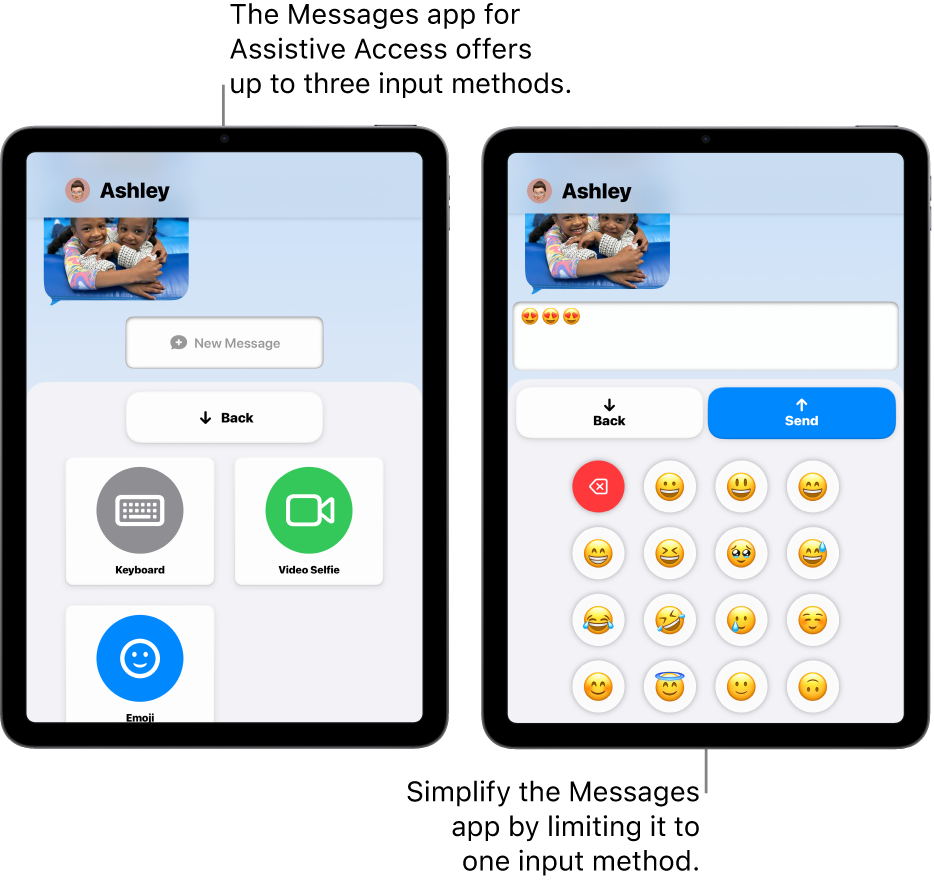Send messages with Assistive Access on iPad
A person using Assistive Access on iPad can use the Messages app ![]() to communicate with family, friends, and trusted supporters (such as caregivers) using video selfies, emoji, or text.
to communicate with family, friends, and trusted supporters (such as caregivers) using video selfies, emoji, or text.
If the Messages app isn’t on the Home Screen, you can add it. See Add, remove, and customize apps for Assistive Access.

Send messages
Enter Assistive Access if it’s not active, then go to the Messages app
 .
.Do one of the following:
Send a message to a favorite contact: Tap a contact, then tap New Message.
Send a message to any contact: Tap Contacts, tap a contact, then tap New Message.
Reply to a recent conversation: Tap Recents, tap a conversation, then tap New Message.
If you don’t see the contacts you expect, make sure they’ve been added to the list of people that the person using Assistive Access is allowed to send messages to. See Set up Messages for Assistive Access.
If more than one input method is available, tap the one you want to use (Keyboard, Video Selfie, or Emoji).
Tip: You can simplify Messages by turning on just one input method (like Video Selfie or Emoji). After the person using Assistive Access chooses who they want to send a message to, they can start creating a message without needing to choose an input method first.
Do one of the following:
Send a video selfie: Tap Record, record the message, tap Stop, then tap Send.
Send a message with emoji or text: Enter the message, then tap Send.
If you’ve turned on Show Notification Badges and the person using Assistive Access receives a message from a contact they’re allowed to reply to, the Lock Screen and the Messages app show a notification icon. To see who sent the message, go to the Messages app. If the message is not from a favorite contact, tap Recents.
On any screen in Assistive Access, the person using Assistive Access can always tap Back to return to the previous screen.